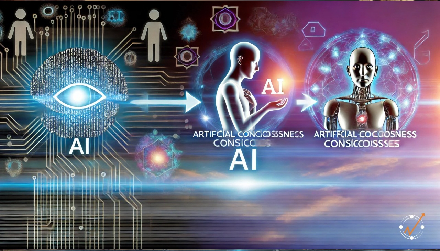Integrating Sustainability into Growth Strategies
By Manoj Gupta, Founder
Let's be honest, the days of unchecked growth at the expense of the planet are over. Today's consumers are discerning. Just the product features and price tags don't cut anymore. They are far more eco-conscious and want to understand how their purchases are going to impact Mother Nature. Meanwhile, investors are increasingly seeking out companies with robust environmental, social, and governance (ESG) practices. Sustainability strategy is no longer a small piece of supplement information in the Annual Report or a niche concern.
It's a strategic imperative, currently being led by a handful of Conscious Leaders.
From a mere Buzzword to the Boardroom agenda:
Let's dispel the myth that sustainability is some fringe concept. A few years ago, it was a process left for some PR stunt or to please the stakeholders. Today, climate actions have become the ultimate innovation challenge – a way to create value while minimizing your environmental impact. Contrary to the corporate myth: sustainable practices often lead to increased efficiency, waste reduction, reduced costs, a stronger brand reputation, and better talent.
Yes, you read that right!
Millennials and Gen Z, the future workforce, prioritise working for companies that walk the sustainable development goals. A study by Deloitte revealed that 75% of millennials would choose a job with a strong purpose over a higher paying one. So, if you want the best and brightest minds on your team, showcasing your commitment to sustainability is a no-brainer.
Here’s the Sustainability Breakdown
Just like a tactician at work, here is my step-by-step guide to incorporating sustainability into your company's value system.
1. Embrace the Power of Purpose through Conscious leadership:
Ask yourself: How can sustainable development be achieved? What are the ultimate goals of sustainable development?
Think of Forest Essentials, the Indian luxury Ayurveda brand. Their purpose goes beyond creating luxurious skincare products by preserving ancient Ayurvedic wisdom by balancing with sustainable practices throughout their supply chain.
Forest Essentials sources a significant portion of their ingredients from local farmers who use environmentally sound practices through their organic farm to cultivate high-quality botanicals. This commitment to green business practices resonates with their target audience – individuals seeking natural, effective products while being mindful of the environment. Their purpose becomes a selling point, not just a marketing tagline.
2. Make ace of waste
Waste – it’s the silent enemy of both profitability and sustainability. Conduct a thorough waste audit to identify areas for improvement. Why isn't there a recycling process for all types of plastics yet? Can you implement energy-saving measures in your production process? A leader in the tech industry, Dell Technologies is a prime example of embracing circularity. They offer a take-back and refurbishment program for old electronics. These refurbished devices are then resold or used as part replacements, extending their lifespan, and minimising e-waste. So, is IKEA, which offers a buy-back and resale program for pre-loved furniture. This extends the life cycle of products, reduces waste, and creates new revenue streams – a win-win for everyone.
3. Transparency is the key
Consumers want to know where their products come from and how they're made. Embrace transparency by publishing sustainability reports and highlighting your eco-conscious efforts. Remember, in today's world, greenwashing (making false sustainability claims) is a recipe for disaster. Be genuine, be transparent, and watch your brand reputation flourish. Speaking of this, I would like to mention the brand - Everlane. The brand has always maintained that it likes to be an open book for its customers. They share detailed information about all their factories, labour practices, and the environmental impact of each product. They like to keep themselves like an open book for their customers. They even list the cost breakdown of each item, showing exactly where their profits go. This allows customers to make informed purchasing decisions.
4. Think transformation, not just transactions
Sustainability is a journey, not a destination. Be prepared to adapt and evolve as you learn more, and new technologies emerge. Think of it as an exciting adventure, not a checklist to tick off. Take a company like Ørsted, the Danish energy giant. They weren't always the clean energy champion they are today. They started as a traditional oil and gas company. But instead of clinging to the old ways, they embraced the transformation. In the end, they took a bold step because they saw the potential of renewables on the horizon. Their journey from making transactions through fossil fuels to transforming as a global leader in offshore wind energy is a testament to turning challenges into innovations.
Summing up….
Sustainable innovation has been in existence for all along. We humans have been getting lessons from Mother Nature, and Science about the importance of sustainability for thousands of years.
However, time is NOW to apply those principles as the Conscious Leaders.
As a Consciouspreneur®, I strongly believe in the fusion of purpose, profit, and planetary well-being.
Let's co-create a future that's good for the business and good for the planet, one sustainable step at a time.


